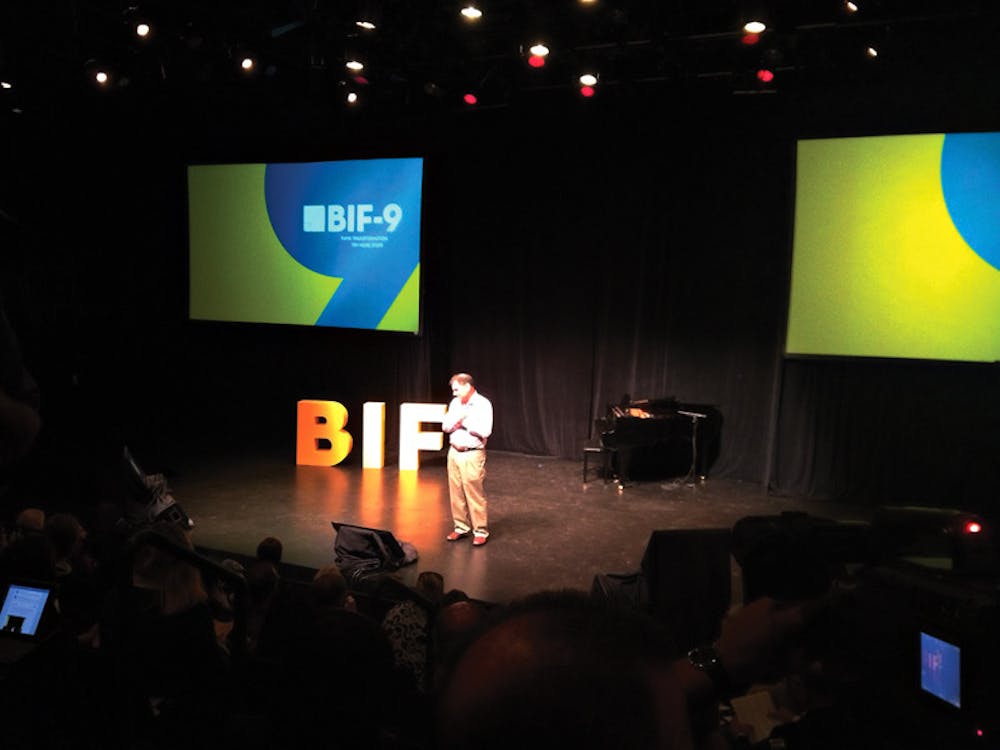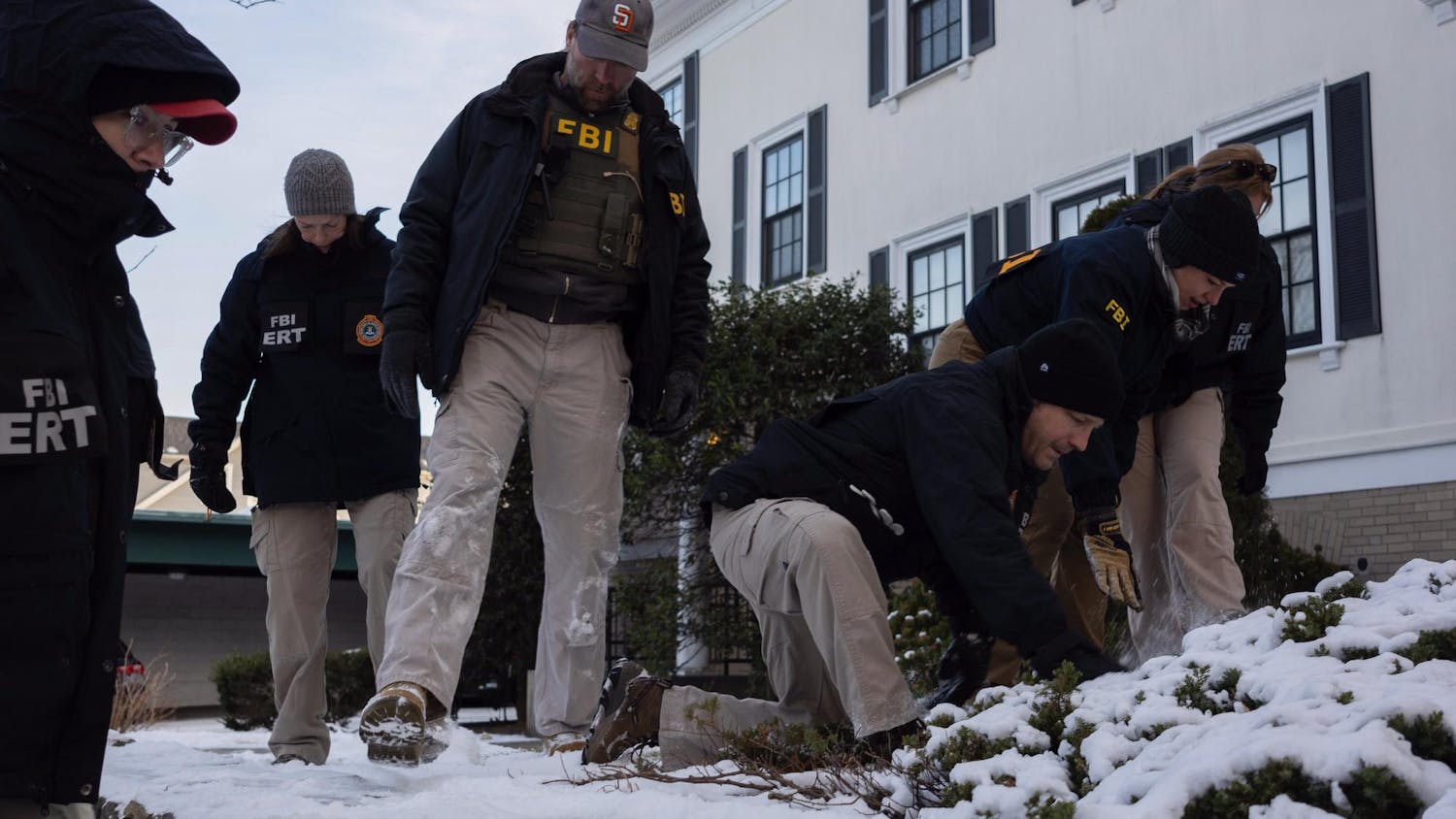During the ninth annual Business Innovation Factory Summit held last Wednesday and Thursday at the Trinity Repertory Company, innovators gathered from around the country to meet, network and learn from each other — in the words of the group’s founder and conference organizer, Saul Kaplan, to “collide.”
“How many rooms do we hang out in where the people in the room have 8,000 reasons for why we can’t do things?” Kaplan said in his opening speech.
“We think of the 8,000 reasons why it can happen — and, more importantly, we don’t stop ’til it does,” he said of the conference’s participants.
Kaplan founded BIF in 2005 as a “laboratory” for innovators to collaborate on solutions to problems in unique, often business-based ways. Similar to the popular model employed by the Technology, Entertainment, Design conferences, BIF’s organizers invite speakers to present their stories in short installments, with each presentation lasting around 20 minutes.
Kaplan and the conference organizers chose this style to inspire the audience more powerfully, he said in his speech. In fact, everything about the conference — from the choice of speakers to the long breaks before and after presentations — was designed to encourage the attendees to find system-level solutions to the world’s challenges.
“Listen, in the 21st century, we’re not going to fix the big problems with tweaks,” Kaplan said. “We need to learn how to transform stuff. We need to learn together how to do more transformational things.”
Speakers ranged from the Coca-Cola Company’s vice president of innovation to a 17-year-old who has developed a prosthetic arm that is lighter and cheaper than many of the models currently on the market.
Doug Ulman ’99, president and CEO of the Livestrong Foundation, jumpstarted the conference’s first day, praising the value of community and speaking fondly of his childhood and undergraduate years. When he was diagnosed with cancer during his time at Brown, Ulman said, he wanted to find a stronger community and joined Livestrong in 2001.
With the spread of the organization’s famous yellow wristband, Ulman said he found his community.
“It’s created connections that we never dreamt possible,” Ulman said of the wristband. “The other thing that this did is it democratized philanthropy.”
Another speaker, with a multimedia piece playing behind her, recounted how she also had found a purpose in serving a community she belongs to — the veteran community.
“The minute I could serve something bigger than myself, I found that I had purpose again,” said Stacy Pearsall, a former combat photographer.
After being wounded twice while serving in Iraq, Pearsall retired from the Air Force at the age of 27. But away from the front lines, Pearsall said, she found other battles to fight at home. She was struggling to heal from her injuries, which included post-traumatic stress disorder and a traumatic brain injury, as well as trying to fit back into daily life as a female veteran.
Pearsall now runs a photography studio with her husband, works as a spokeswoman for the Real Warriors Campaign and heads the Veterans Portrait Project, photographing veterans and composing photo essays about their struggles.
Other speakers discussed their work helping various communities in need. Rosanne Haggerty spoke about Common Ground, the organization she founded to provide housing to homeless people around the country.
After she worked to restore an old, dilapidated hotel into affordable housing for homeless people who had been living on the streets around Times Square in New York City, Haggerty said, she realized she could affect large-scale change with bold goals and the right tools.
“We have this whole energized workforce who never had the right insights, the right tools, the right collaboration to get anywhere,” Haggerty said. “I wonder if the lesson is that pride in our most recent innovation is the obstacle to see what our next could be.”
Viveka Hulyalkar ’15, who attended the conference for the third year in a row, said BIF has taught her how to connect with people in a way other experiences have not.
“You just meet people who are involved in so many different things, and they teach you how to make an impact,” Hulyalkar said. “It’s a great experience just being in a room full of really accomplished people. It’s totally expected to just go up to people and just kind of accost them.”
Hulyalkar said she was most affected by a speech given by James Doty, a clinical professor of neurosurgery at Stanford University, who discussed his research on the neuroscience of compassion and the effects societal restrictions have on health.
“Over the last three decades, neuroscientists learned ... that when somebody is authentic, when somebody is who they really are, that is when they are their best, when they thrive, when they get every benefit,” Doty said in his speech.
Doty’s speech drew from his research findings and childhood experiences, as well as from his brother’s death from AIDS. Compassion toward others, especially in widespread forms like gender equality, will help make humanity happier and more successful, he said.
“When one steps out of what society (and) culture (have) defined as the normal paradigm, what it does is it unleashes us to be who we are, and therefore flourish and thrive,” he said.

ADVERTISEMENT




